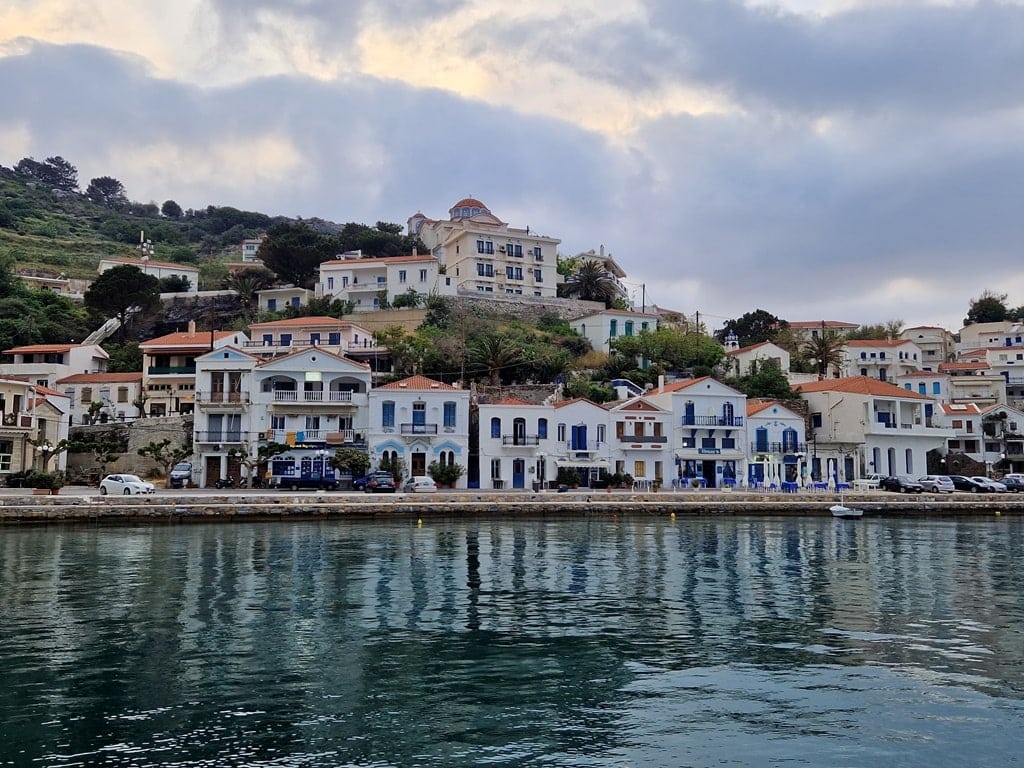If you are looking for a unique, different Greek Aegean island with lush nature, rich culture, and beautiful beaches, then you can’t miss Ikaria. Ikaria is considered one of the most verdant islands of the Aegean and is mentioned as the place where the population has the highest longevity in the world together among three other locations. If you’re looking to relax and be rejuvenated, then Ikaria is where you need to go.
This guide will help you make the most of a truly unique vacation, and enjoy everything that Ikaria has to offer- and that’s a lot!
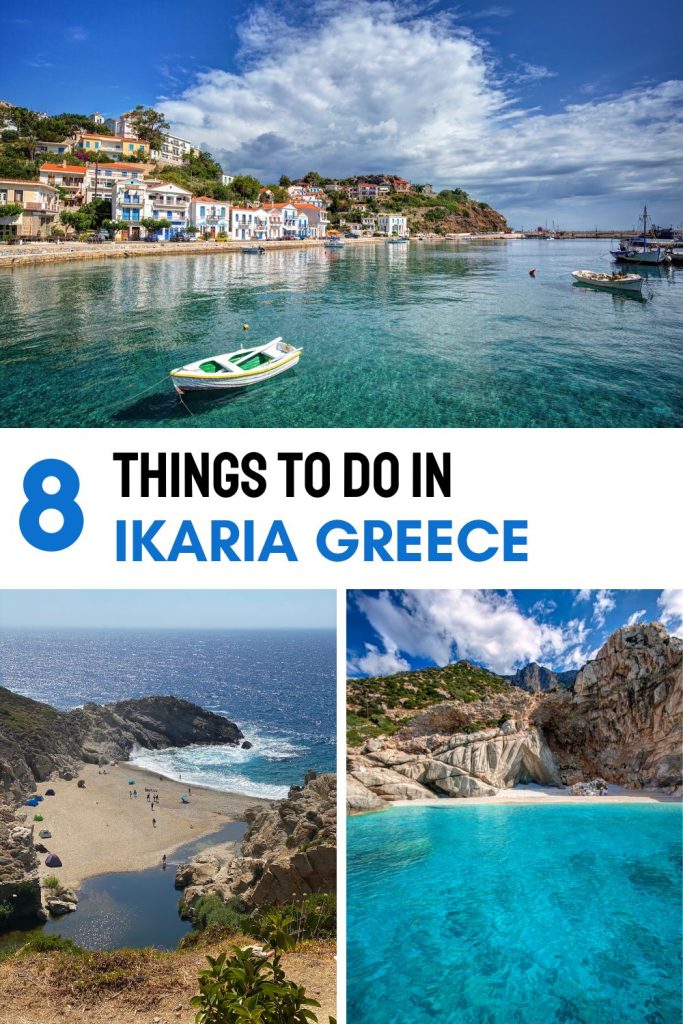
Disclaimer: This post contains affiliate links. This means that should you click on certain links, and then subsequently purchase a product, I will receive a small commission.
- Where is Ikaria?
- How to get to Ikaria
- A Brief History of Ikaria
- The Ikarian way of living
- Things to see and do in Ikaria Island
Where is Ikaria?
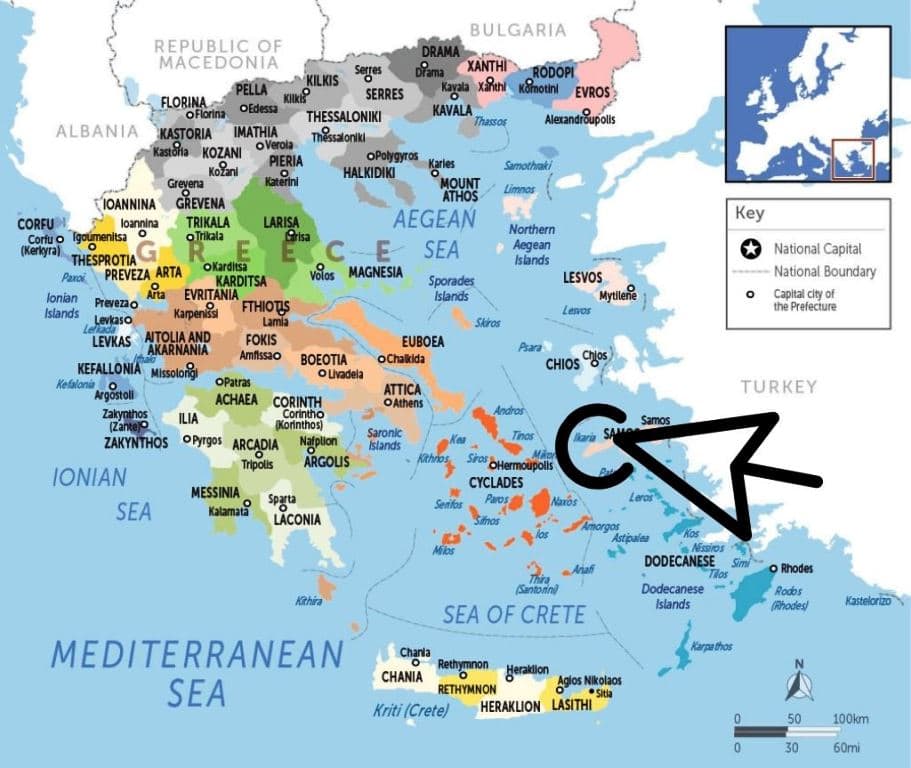
Ikaria is located in the Eastern Aegean, just 30 miles off the coast of Turkey and about 10 miles from the island of Samos. It is one of the largest Aegean islands and one of the lushest and green in terms of natural beauty: shady forests, streams and creeks, waterfalls, and valleys compose a unique setting that meshes seamlessly with the general architectural style of the island.
The climate in Ikaria is Mediterranean, which means hot, dry summers and relatively mild, humid winters. Temperatures climb up to 35 degrees Celsius during summer, with heat waves touching 40 degrees. Winter temperatures drop to around 5 degrees, with cold spells lowering to 0.
The best season to visit Ikaria is summer, from mid-May to late September. There generally aren’t too many crowds in Ikaria, but if you want to make sure to enjoy the island at its most authentic while keeping access to all summer amenities, then prefer to book in September.
How to get to Ikaria
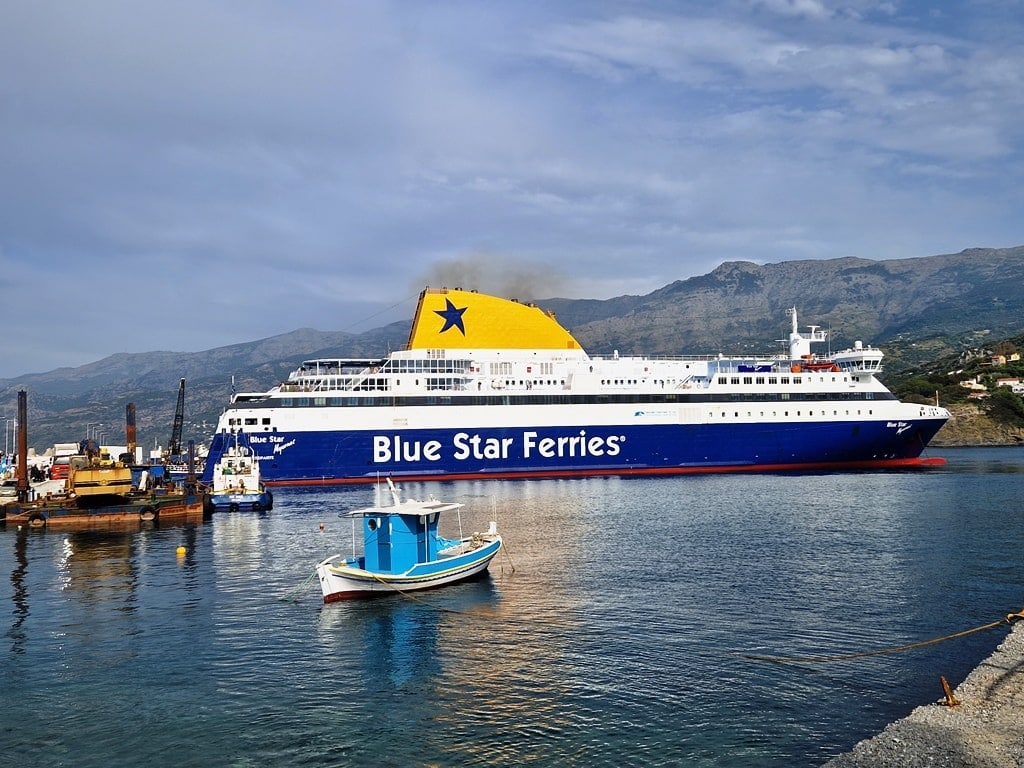
There are two options for traveling to Ikaria: air or sea.
You can take a ferry to Ikaria directly from Athens’ Piraeus port. If you opt for that, make sure to book a cabin as the trip takes 11 hours!
There are more ferry connections to Ikaria from various islands in the Cyclades, such as Syros and Mykonos. There’s also a ferry from Chios. If you find yourself in Northern Greece, you can also get a ferry from Kavala’s port to Ikaria, but that trip takes around 16 hours.
Click here for the ferry timetable and to book your tickets.
Or enter your destination below:
If you want to save on travel time, you should opt for flying to Ikaria. Ikaria has a domestic airport and receives flights from Athens and Thessaloniki. The flight takes roughly an hour, so it is worth the ticket price.
The best way to get around the island is by car. I recommend booking a car through Discover Cars, where you can compare all rental car agencies’ prices and cancel or modify your booking for free. They also guarantee the best price. Click here for more information and to check the latest prices.
A Brief History of Ikaria
Ikaria gets its name from the myth of Icarus. According to the legend, after Icarus’ father Daedalus built the labyrinth for King Minos of Crete, the king didn’t want to let him go since he knew its secrets. The king also figured that he could use Daedalus for more inventions or building works. That’s why he shut him in a tall tower without doors together with his son Icarus.
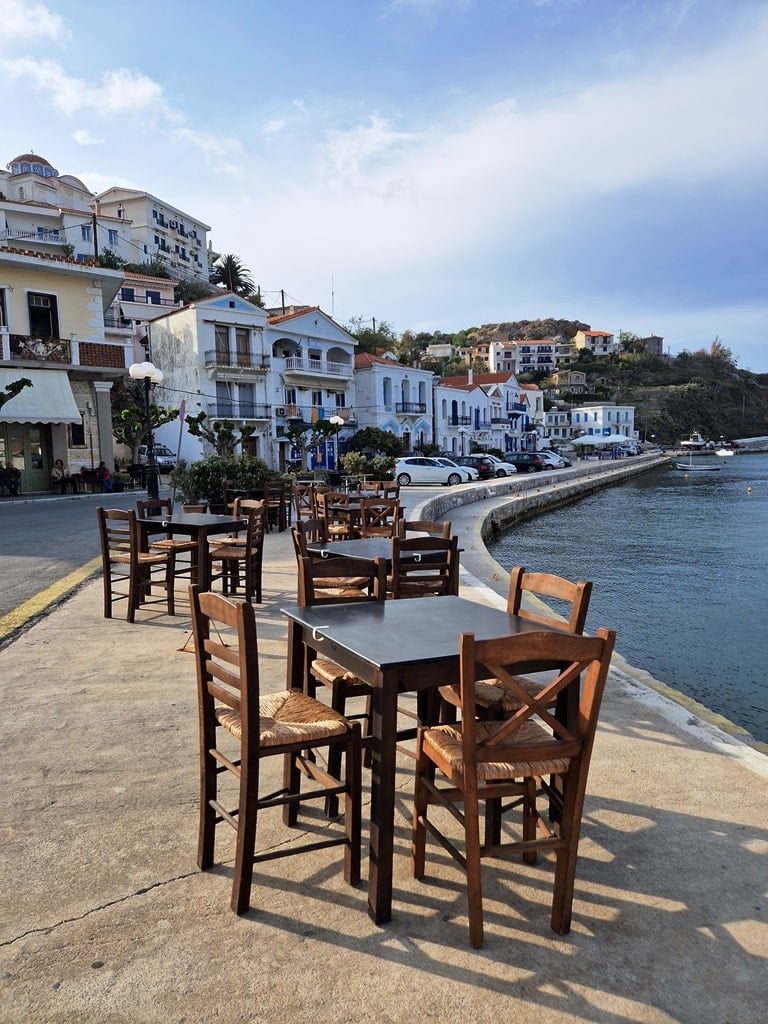
In order to escape, Daedalus crafted wings made of wood, feathers, and wax. He fashioned a pair for himself and for his son and instructed him not to fly too low, to avoid getting the feathers wet, or too high to prevent the sun from melting the wax.
Unfortunately, when they set to flight, Icarus became too excited with the experience of flying and flew too close to the sun. The sun rays melted the wax and the boy plummeted to his death close to the island of Ikaria, which was named after him.
Ikaria has been inhabited since the Neolithic age, by proto-Hellenic tribes called Pelasgians. The island had a sacred side to it with various temples, the most prominent of which was to Artemis who was a patron of seafarers among other things. During medieval times and after the Byzantines, the Genoese ruled over Ikaria.
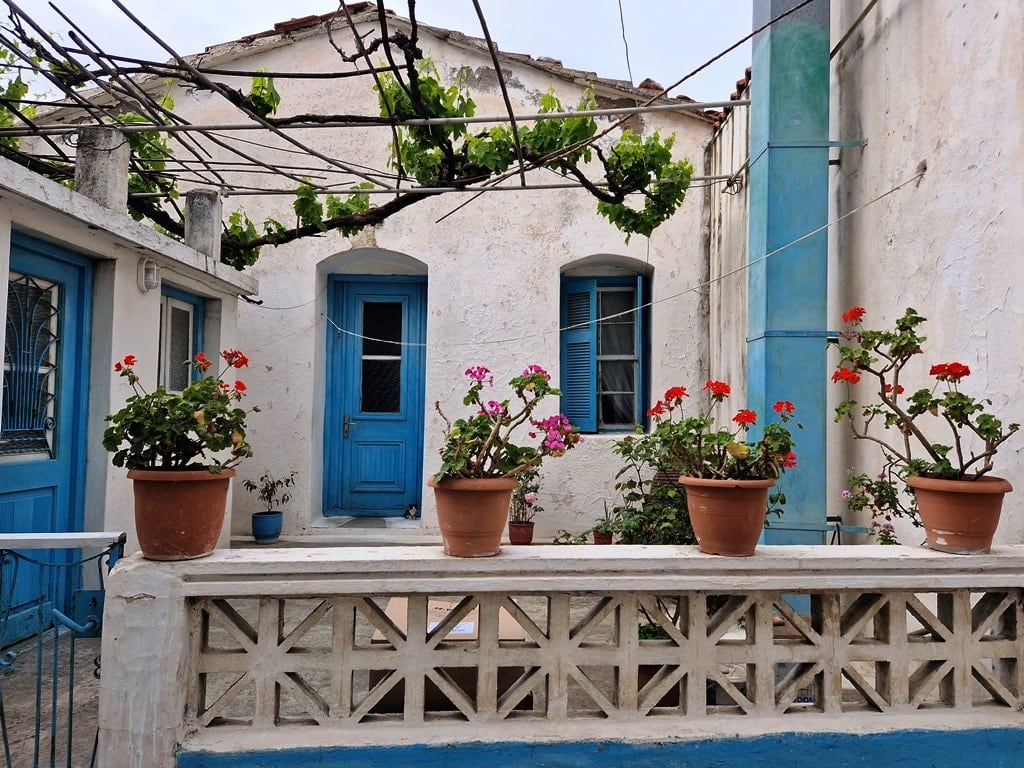
The island’s defensive methods against piracy greatly affected the architectural style of the houses from that era (low stone houses with stone roofs designed to disseminate smoke from the chimney so the house wouldn’t be easily located by intruders).
The Templar Knights also controlled Ikaria until the 14th century when the Ottomans took control of the island. Ottoman rule on the island was generally lax until 1912 when Ikaria was added to the modern Greek state. During WWII, Ikaria paid a heavy toll in the struggle against the Nazis during the occupation.
It also served as a place of exile for dissidents to the government and communists in the post-war years. This, along with the left-leaning inclination of the Ikariotes, earned the island the moniker “Red Rock” or “Red Island”. The island remained quite poor until it became a tourist attraction in the 60s and onwards.
The Ikarian way of living
It is not a chance that Ikaria is the island of longevity. There are many articles explaining that the Ikarian way of living literally adds years to your life. There are several aspects to it that contribute to this expansion of human life, the biggest one of which is the protection from stressors.
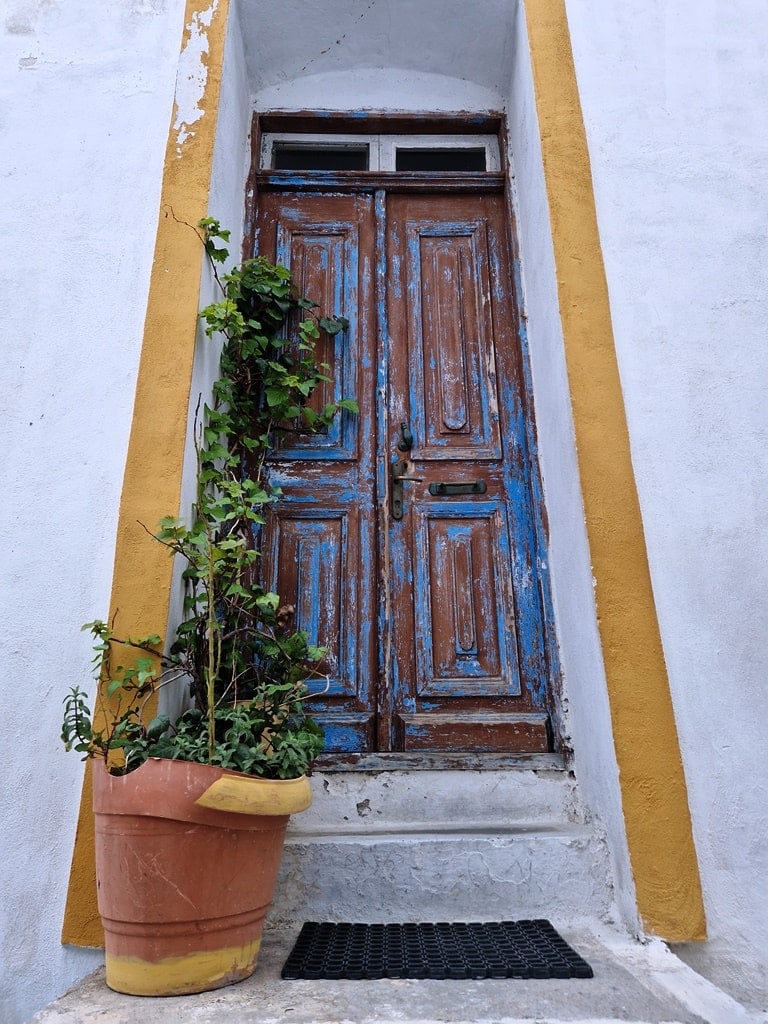
It is said that in Ikaria nobody carries a watch, implying that the rhythm of life is slow. People don’t rush to do things. They complete them without stressing out about super hard deadlines. They also tend to favor naps in the afternoon which research has shown lowers blood pressure and rejuvenates people.
The Ikarian lifestyle too favors being extremely active, having a diet rich in leafy greens and cooking methods that don’t destroy nutrients, while social life is egalitarian and highly cohesive.
These are the ingredients that build a long, happy life!
Things to see and do in Ikaria Island
Ikaria is an oasis of nature, culture, and history. There are many things to do- at your leisure, as is the authentic Ikarian way!
Visit Ikaria’s villages and towns
Aghios Kirikos
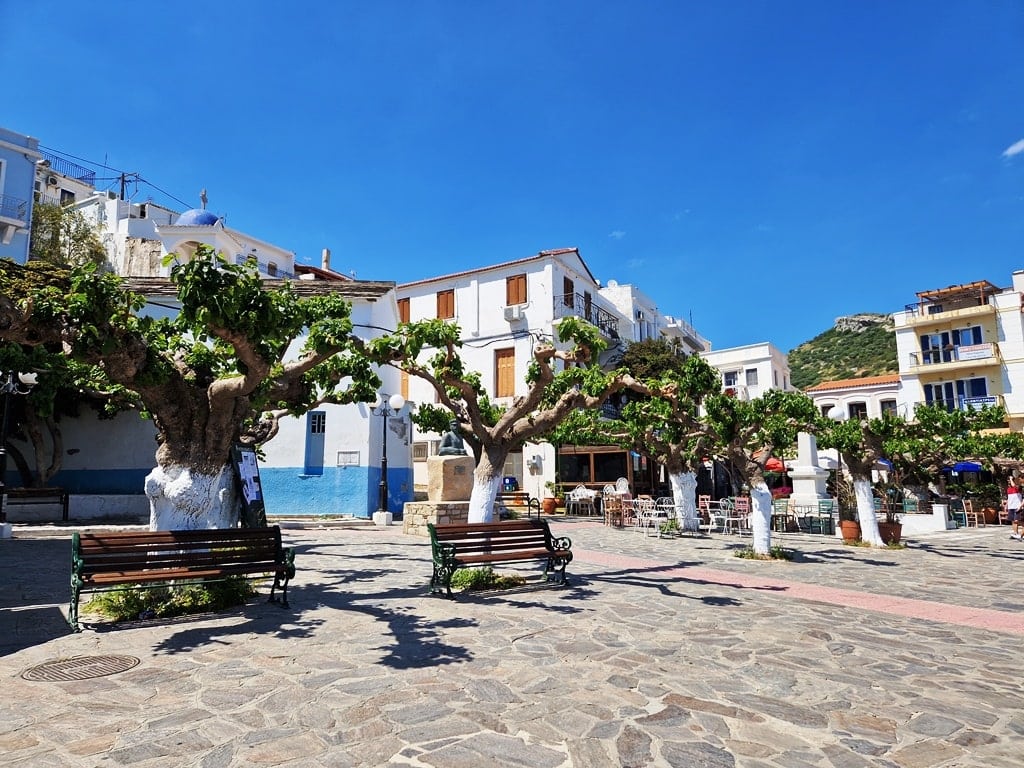
Aghios Kirikos is Ikaria’s Chora. Founded roughly 300 years ago, the town is the largest one on the island. It has a beautiful, iconic architecture that is a mix of the islander and neoclassical styles with flowers blooming on the balconies and narrow, scenic pathways. Aghios Kirikos also has the island’s main port and a lot of excellent venues are located there.
Armenistis
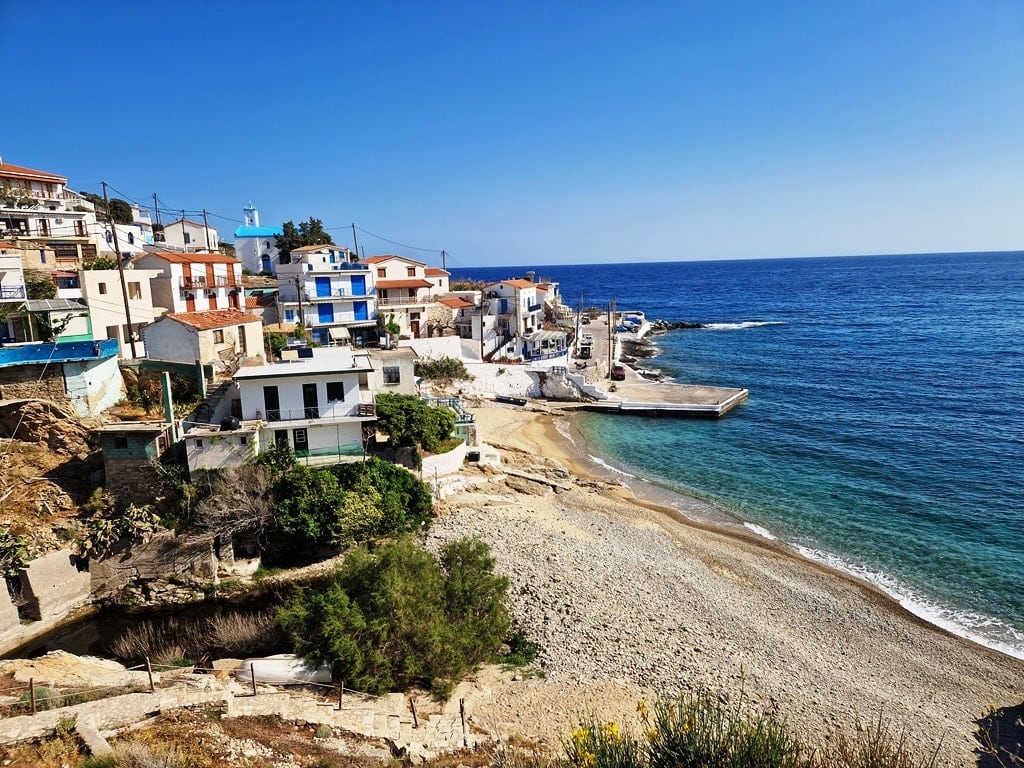
The tiny village of only 70 inhabitants is basically a painting that comes to life. Coastal, picturesque, with beautiful colorful houses and a lovely church, it is about 50 km north of Ikarias’ Chora, Aghios Kirikos. Armenistis has some of the most gorgeous beaches on the island and though it is popular with tourists, it has managed to remain authentic.
Evdilos
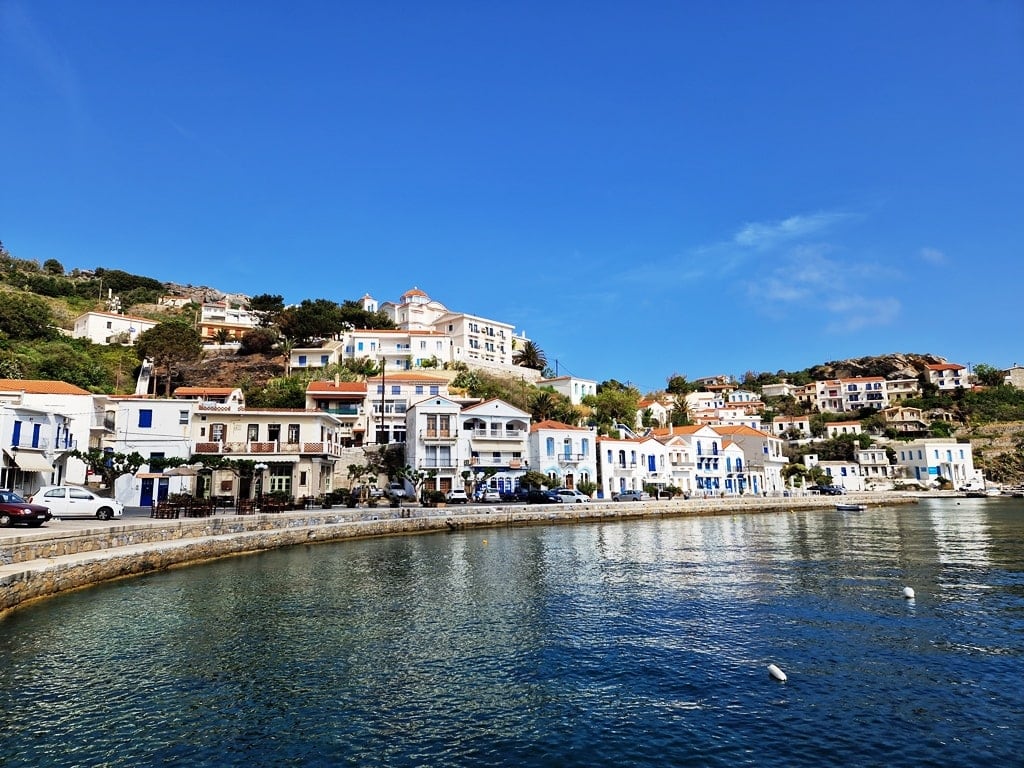
38 km west of Aghios Kirikos you will find the beautiful village of Evdilos. Built in the mid-19th century when pirates ceased to be a risk, this village was the previous Chora of Ikaria, before Aghios Kirikos. You will find iconic crimson-tiled houses with gorgeous colors, emerald waters lapping by the port, and beautiful, lush nature embracing the neoclassical style of the buildings.
Christos Rachon
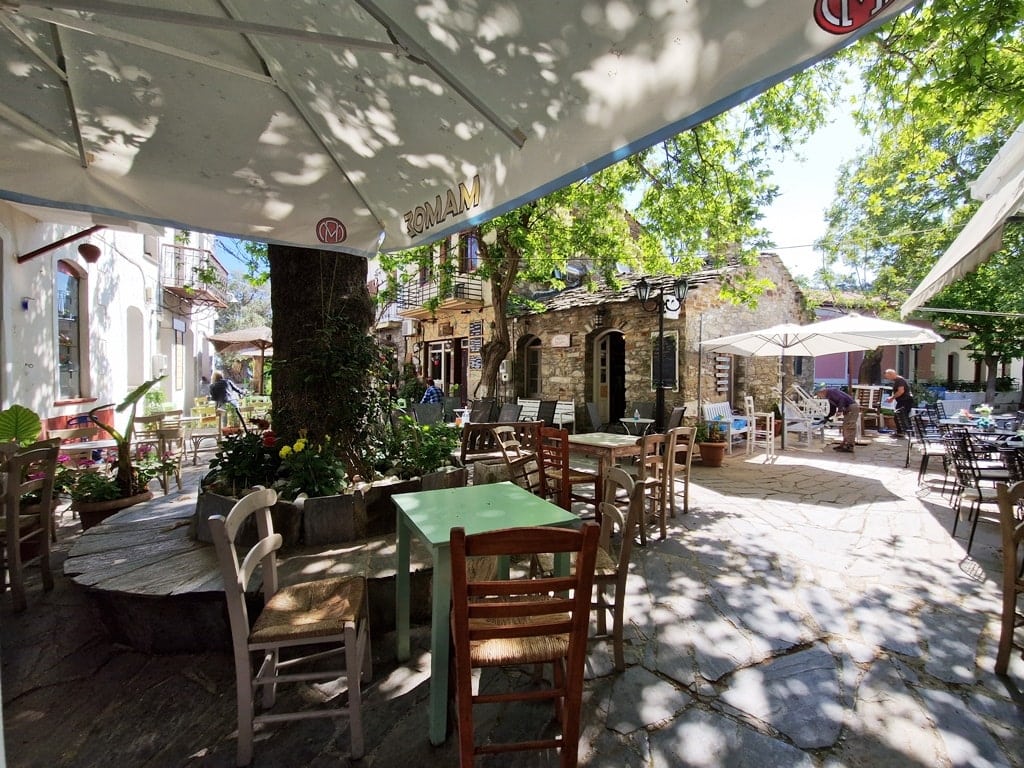
This village is also known as the village that never sleeps! Situated within a lush, verdant forest and with very particular, iconic traditional stone architecture, Christos Rachon has a peculiar schedule: during the day, everything is shut down and villagers tend to relax or sleep.
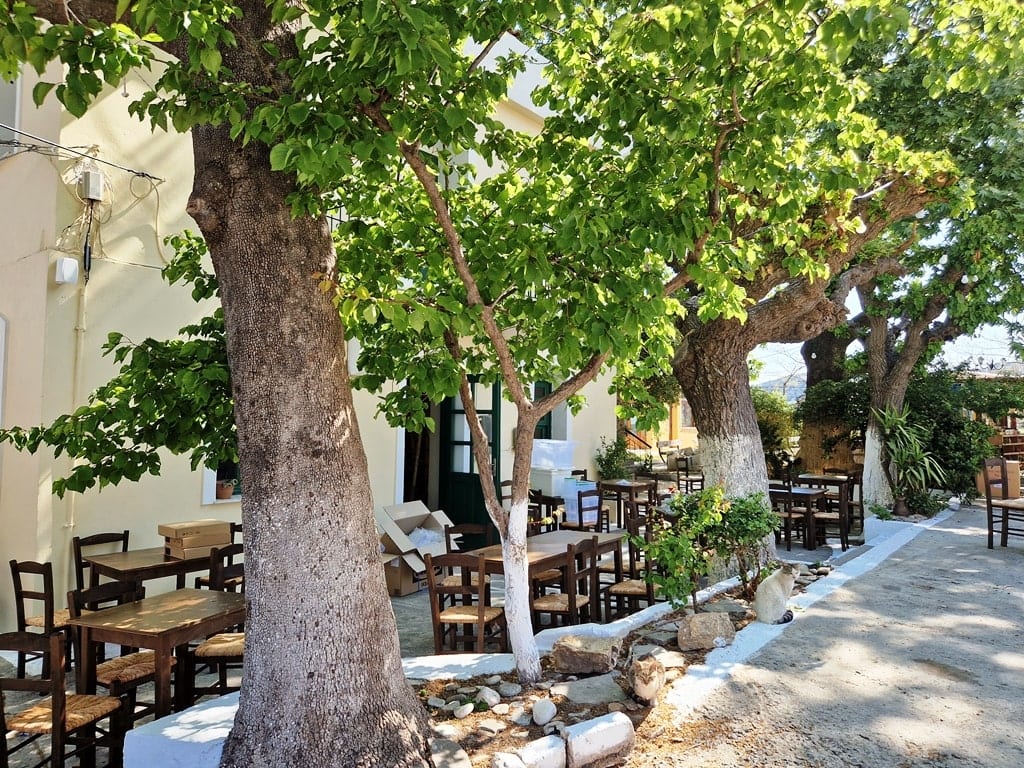
It’s only during and after sundown that the village begins to wake, with the night being turned into day as all activity, including shops, is booming then! Look for the bakery that has no baker (he’s out fishing), where you can just take the loaf you want and leave the money in its place. The doors are only closed when there’s no bread left!
Akamatra
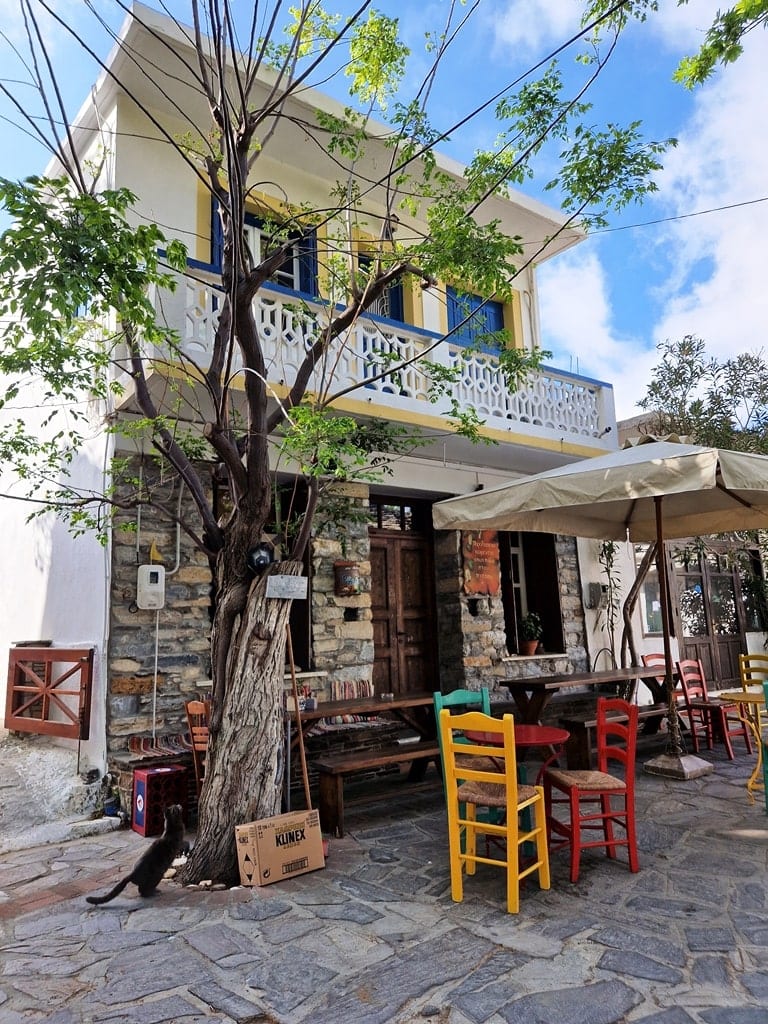
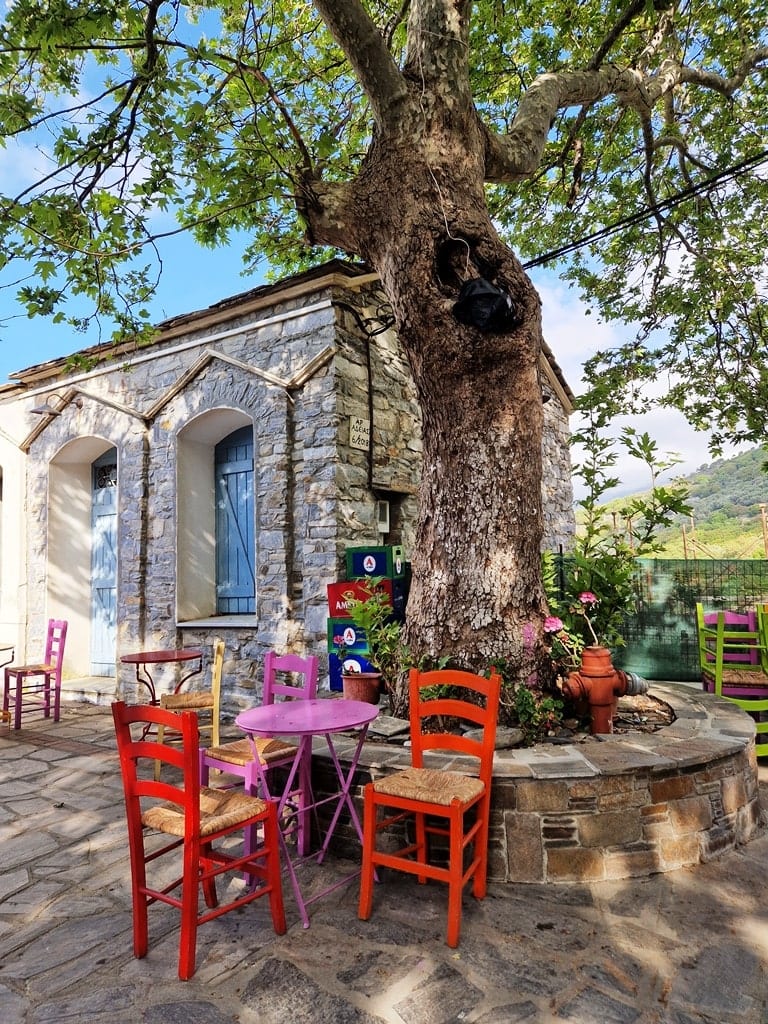
Just 5 km from Evdilos, built on a rolling green slope lush with trees and nature, you will find the village of Akamatra. The name means “lazy one” and was given to the village because at its square reclined all the “lazies” and old people. The village dates at least from the 15th century, and at the center of its square, there reigns a 500-year-old oak tree.
Visit the castles of Ikaria
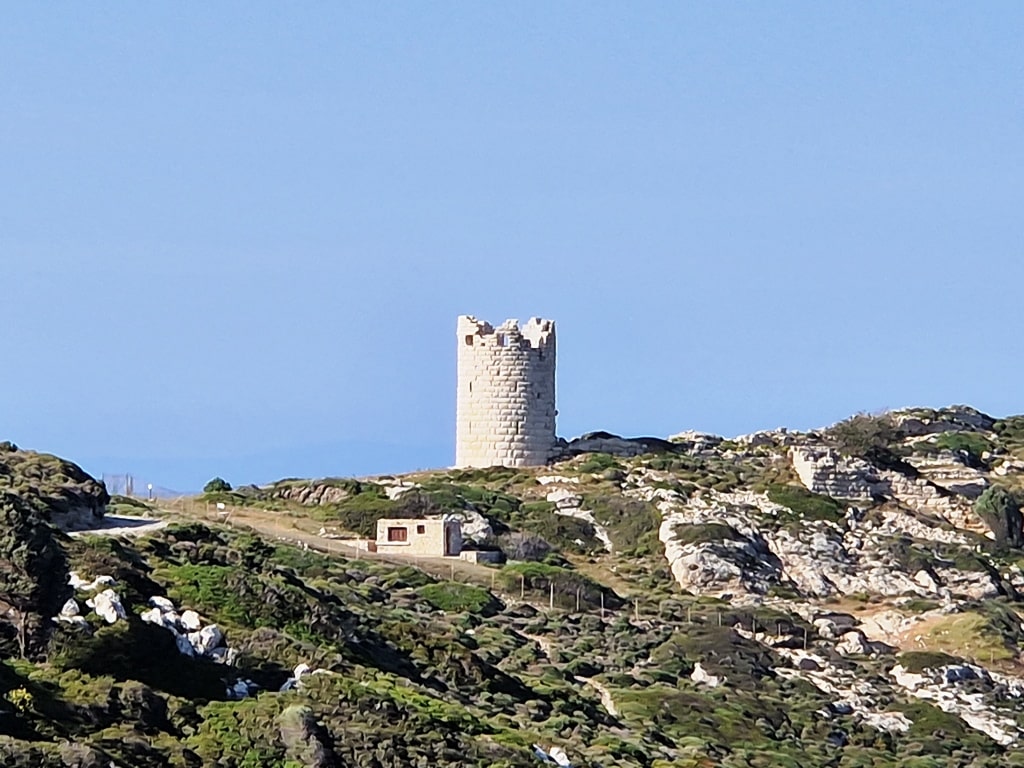
Drakano Fortress: This is one of the best-preserved examples of ancient fortified watchtowers. Dating from the Hellenistic period, the Drakano Fortress was used to oversee the sea between Ikaria and Samos. It was in use from the time of Alexander the Great until modern times! It was destroyed in the 19th century. Visit for a great vantage point and a rare piece of history!
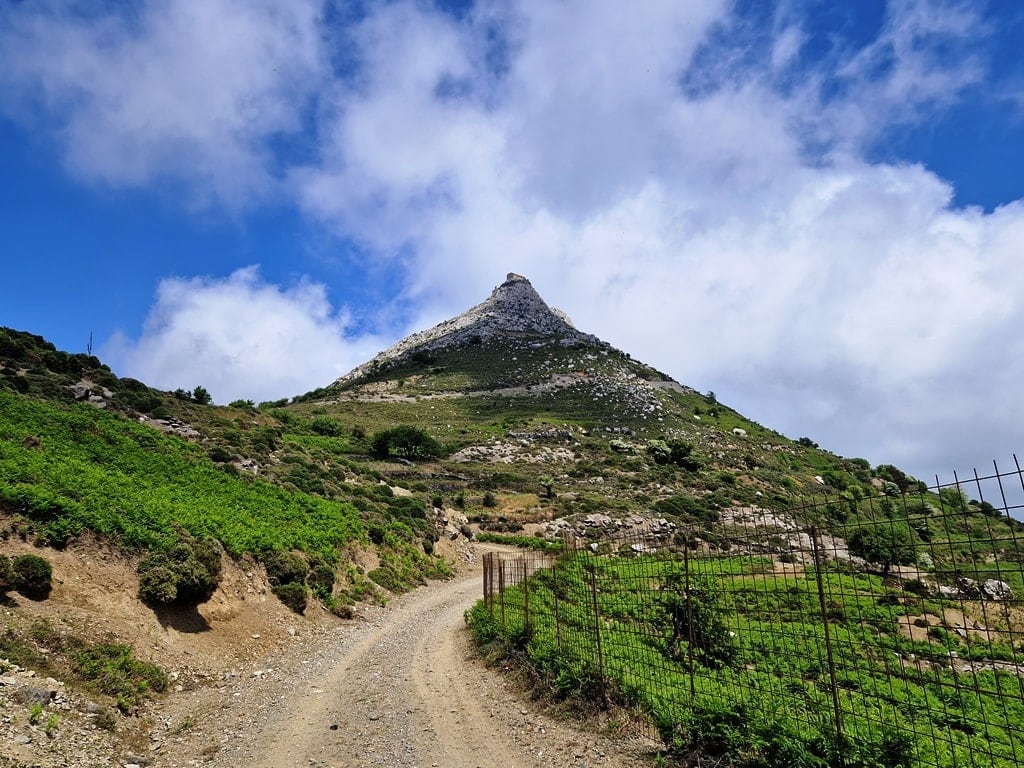
Koskina Castle: This Byzantine castle dates from the 10th century AD and it was built to protect the dwellers from pirate attacks. Hiking to the top to reach it can be tiring. Still, you will be compensated with the breathtaking, stunning view of the Aegean and the island, as well as the beautiful church of Aghios Georgios Dorganas, which is remarkably well preserved.
Visit the archaeological sites of Ikaria
Temple of Artemis: This shrine to Artemis is one of the oldest ones dedicated to the goddess of the hunt, sailors, and wild animals. Situated at Nas, in a natural bay that was probably the first place used by the dwellers for communication and trade with Asia Minor, the temple’s ruins offer a view into the past next to a gorgeous sandy beach.
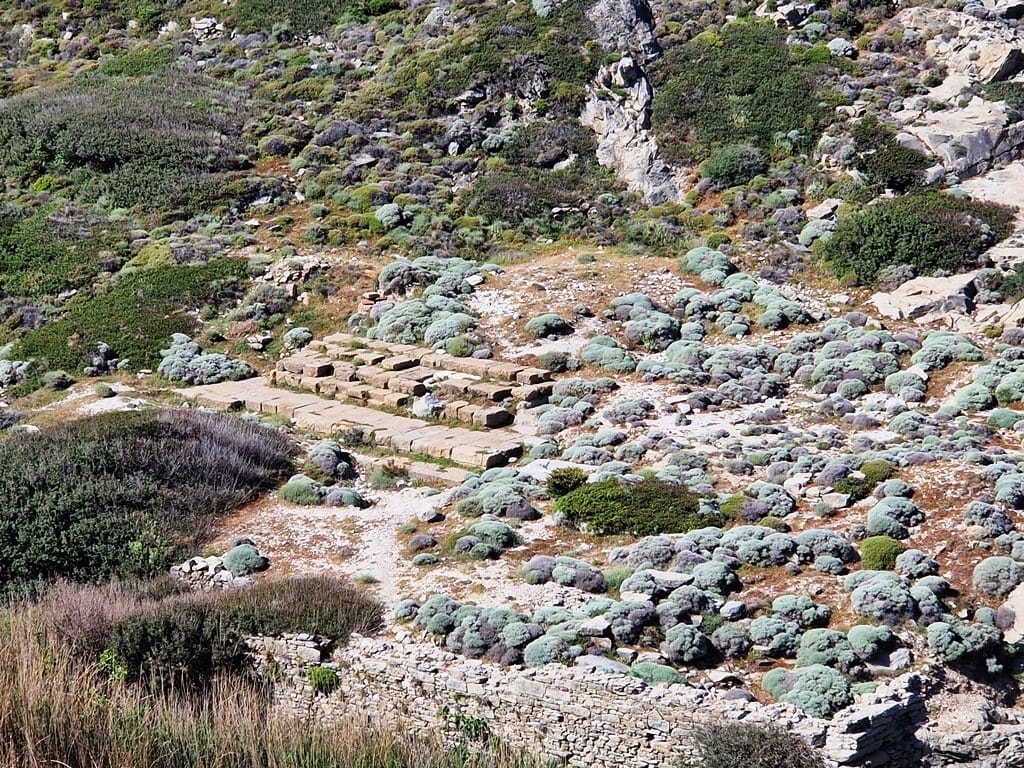
Byzantine Odeon: Near the village of Kampos at the north of the island you will find the Byzantine Odeon. The theater was built in the 1st century AD and called the Roman Odeon. Enjoy the remnants of what was a beautiful structure, currently swathed in lush greenery but still majestic.
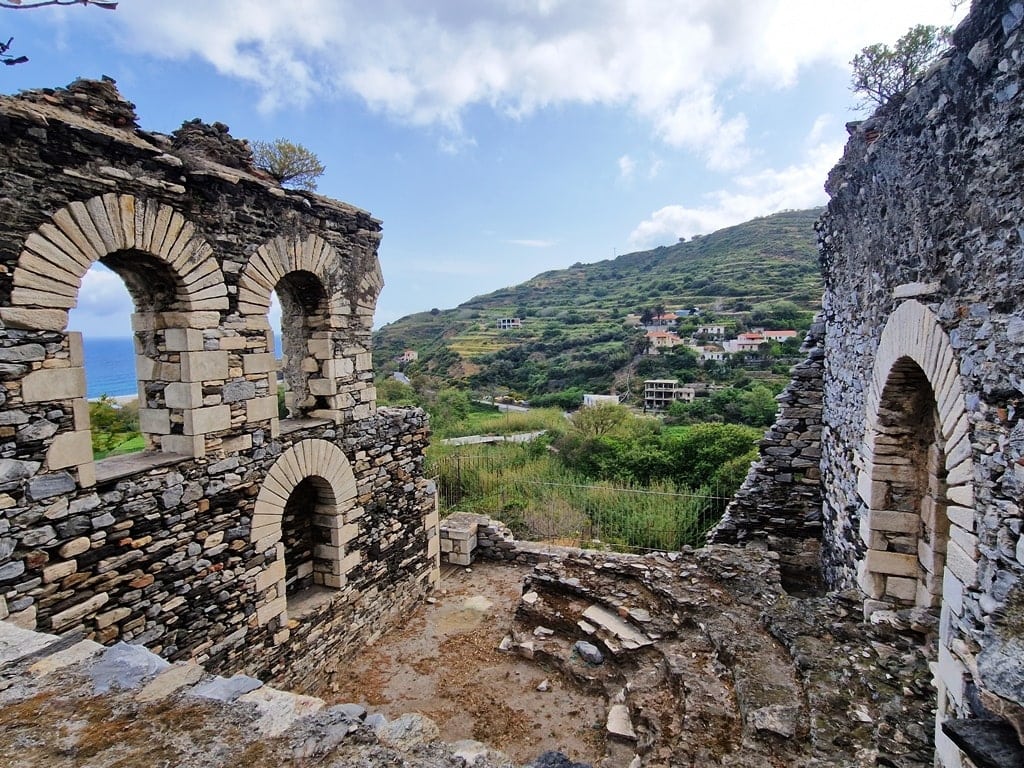
The Menhir Monument: Near the airport, in the area of Faros, you will find the mysterious ancient monument made of peculiar menhirs. There is a lot of speculation about the function of this ancient site, from a burial ground to a place of worship. Visit it to imagine what it was for yourself while you take in the gorgeous views from its vantage point.
Roman Baths: Not too far away from Aghios Kirikos, you will find the remains of the Roman Baths of the ancient city of Therma. Some of the walls still stand. Follow the path alongside it to find the nearby cave where Ikariotes would hide goods in times of need. If you like snorkeling, you will see evidence of the ancient city underwater in the area, too.
Visit the museums of Ikaria island
Ikaria Archaeological Museum: Housed in a beautiful, iconic neoclassical house that used to be the town’s old high school in Aghios Kirikos, you will find Ikaria’s Archaeological Museum. The building itself is a gem to enjoy. Within, you will also be able to admire collections of findings from the Archaic and Classical periods of the island.
Kampos Archaeological Museum: The findings and exhibits in this tiny museum all come from the site of ancient Oenoe (the general area of Kampos) at the hill of Aghia Irini. Make sure to visit the impressive gravesites and the marble sarcophagus from late antiquity, which is heavily decorated with carvings.
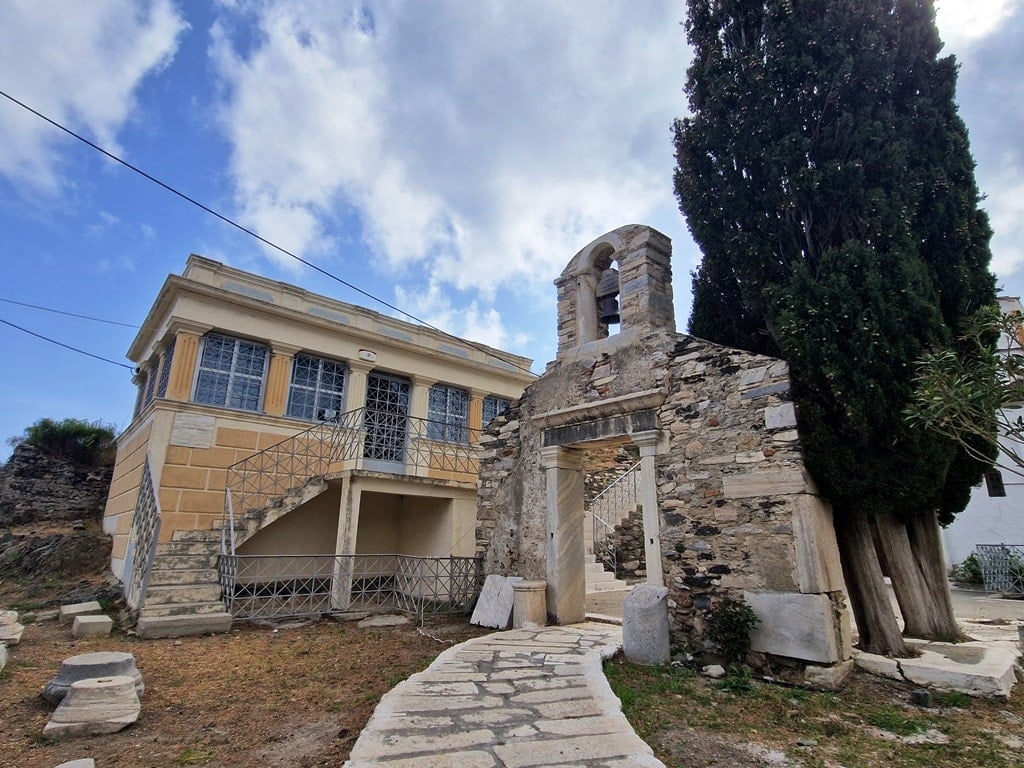
Ikarian Museums of Folklore: In the village of Vrakades, you will find the interesting museum of Folklore. Within it, you will see exhibits of the medieval and early modern history of Ikaria, from everyday items to tools for rope making and fabric to unique documents from the short period in the 19th century when Ikaria was a Free State before joining Greece.
See the monasteries of Ikaria
Monastery of Theoktisti
Towards the north of Ikaria, near the village of Pigi, you will go through a lush pine forest to find the monastery of Theoktisti. It was likely founded in the late 14th or early 15th century and was active until the 1980s.
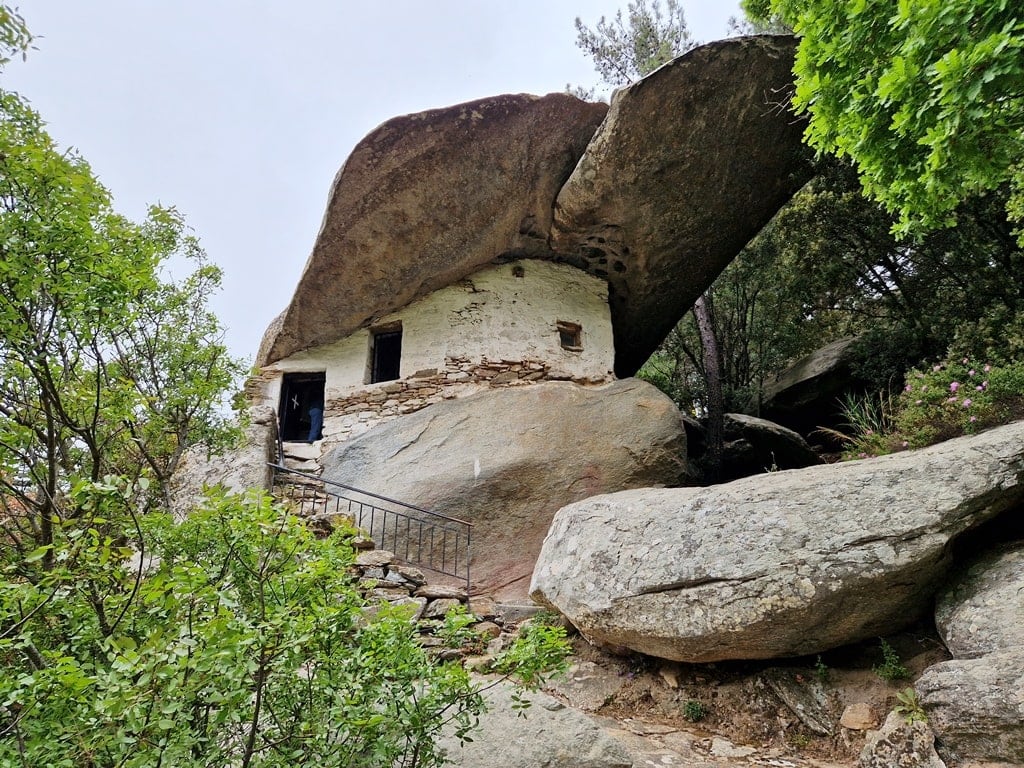
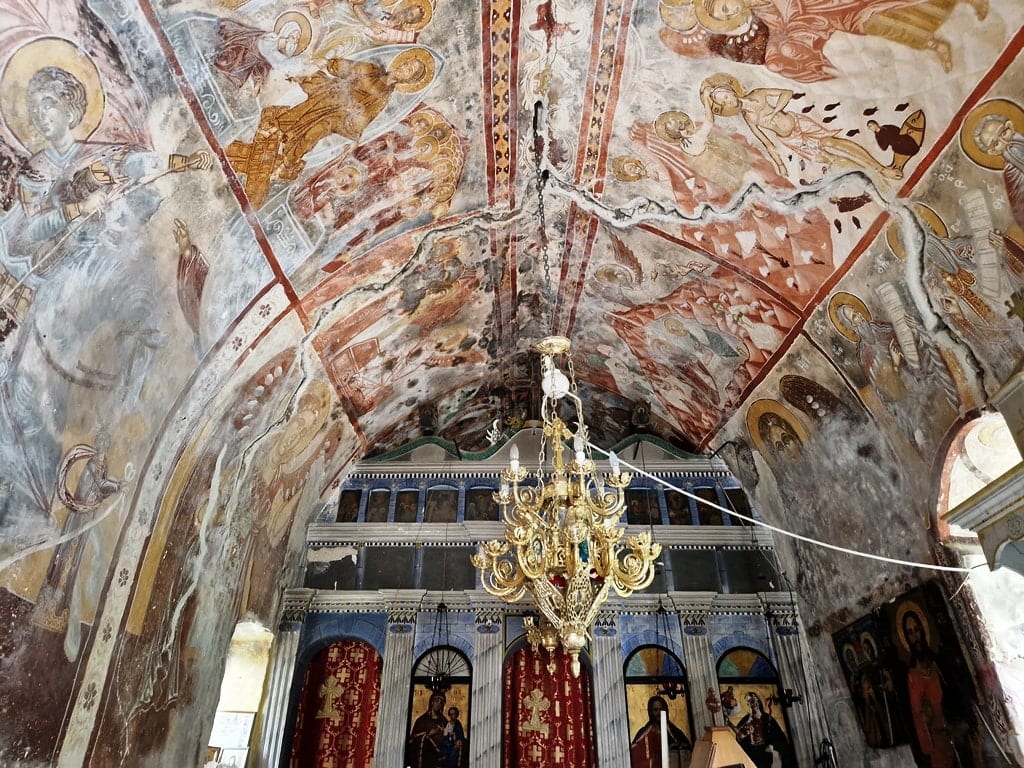
Visit the church with the beautiful frescoes and the ornate iconostasis, and don’t miss out on seeking the little chapel of Theoskepasti, where legend has it the remains of the saint after whom the Monastery gets its name were found. It is virtually within a cave, and you need to stoop to walk in it and admire its beautiful iconostasis.
Monastery of Mounte (Evaggelismos)
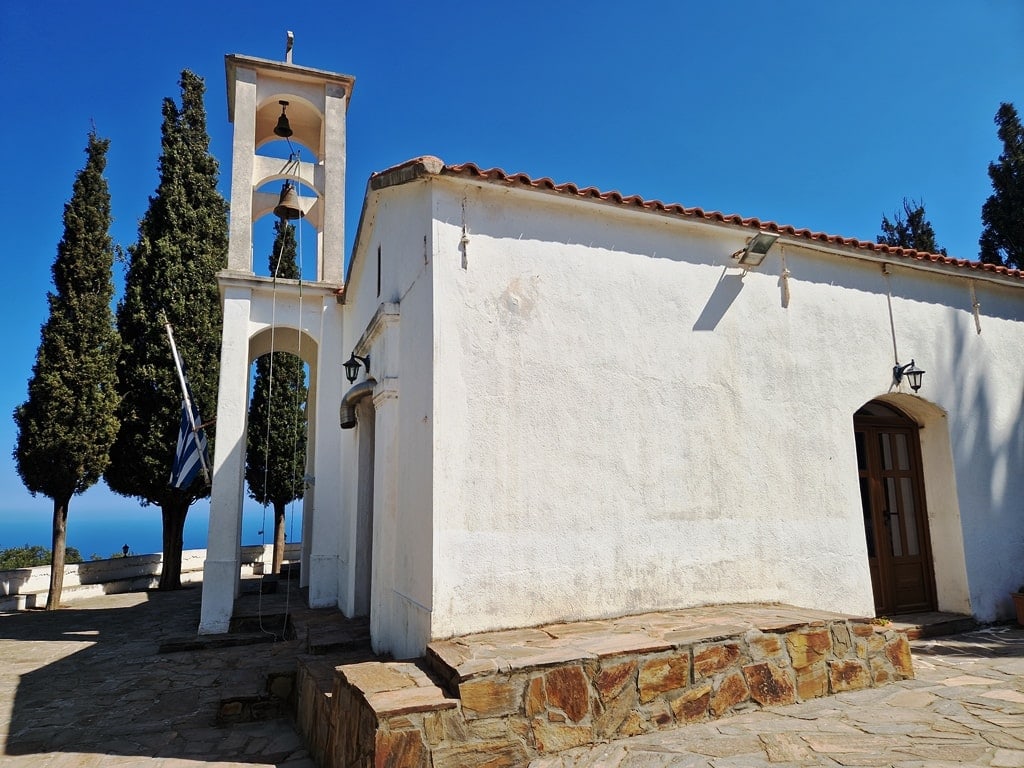
Near the village of Kastanies and surrounded by lush green nature, you will find Mounte Monastery, dedicated to the Annunciation. It was built in the 1460s, and legend has it that an Ikarian kid had a vision of the Virgin Mary about where the monastery should be made. Visit it for the gorgeous frescoes and beautiful, detailed iconostasis and its history of serving as a hospital during the Greek Civil War.
Hit the beaches of Ikaria
Ikaria boasts several gorgeous beaches, but here are the top ones to start your beach exploration with:
Nas: Nas Beach is easily one of the prettiest beaches on the island. Situated 55 km north of Aghios Kirikos, Nas is actually a small gorgeous cove with silky sand and turquoise waters. Just beyond the beach itself, you will even discover a pretty waterfall and stream within the forest, so make it a day of lounging and adventure at the same time!
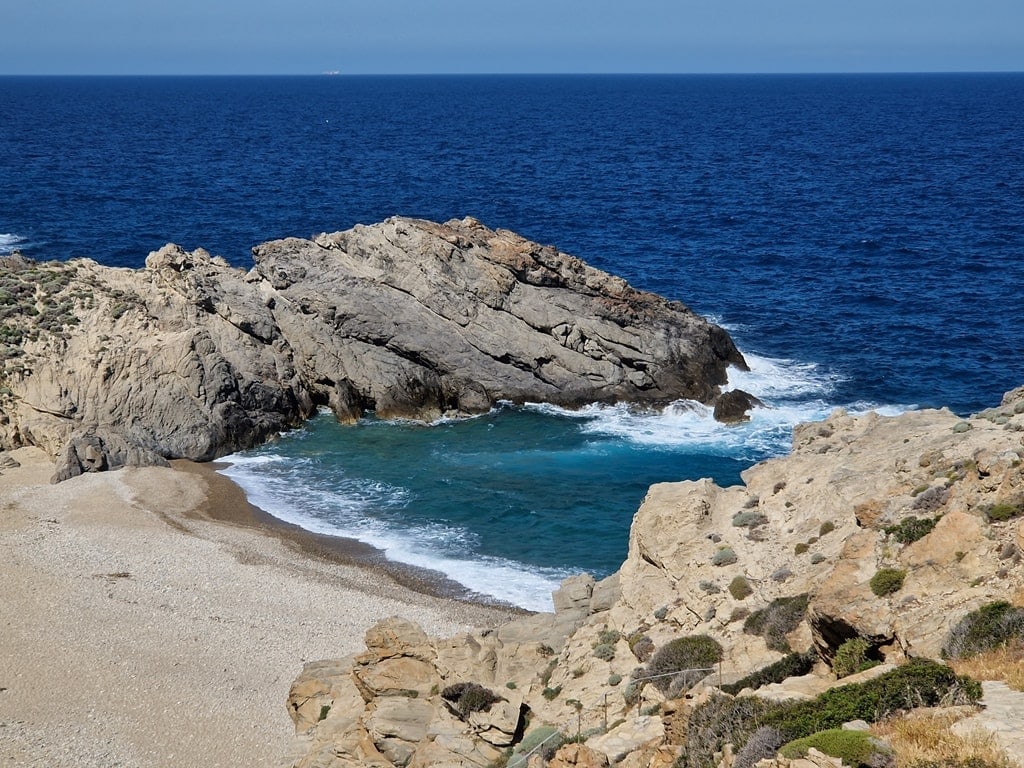
Seychelles: Seychelles beach didn’t get its name for nothing! It’s astoundingly gorgeous with emerald waters and imposing rock formations. The beach is bright white and pebbly, and the colors make you forget that you are in the Aegean. Seychelles Beach is 20 km southwest of Aghios Kirikos.
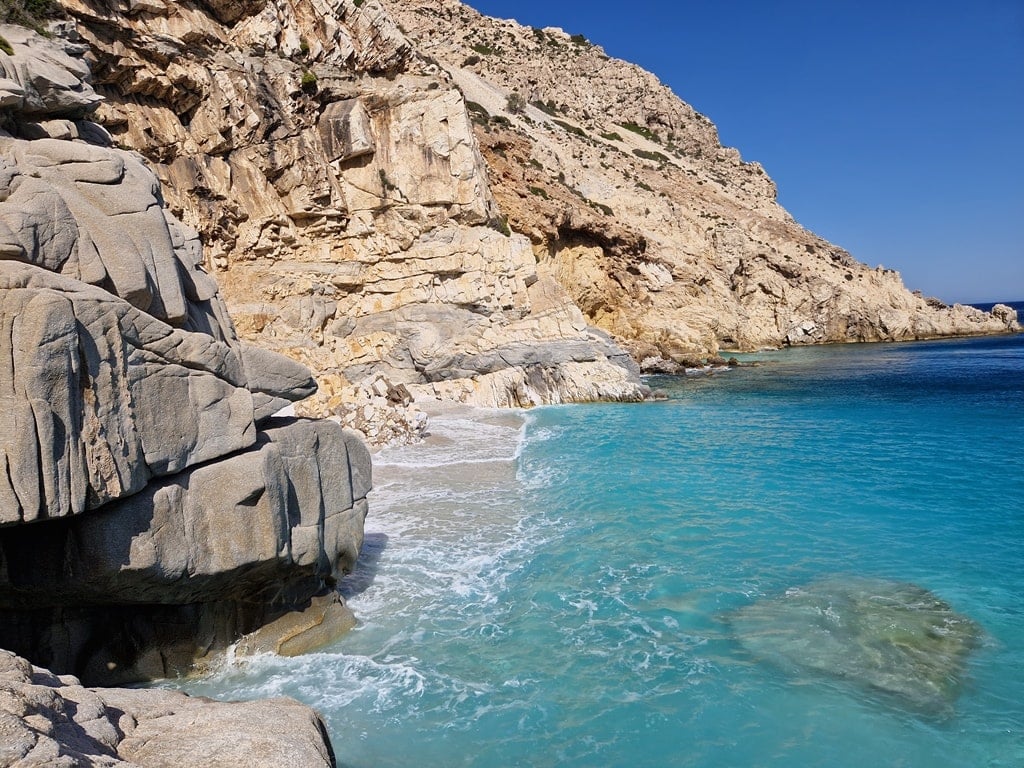
Messakti: Close to the village of Armenistis you will find the beautiful beach of Messakti. It is not only sandy and with gorgeous blue waters. It has two streams that converge on the beach and form lovely lagoons you can enjoy. These lagoons are freshwater! Messakti is organized in some spots, and some extra amenities are available.
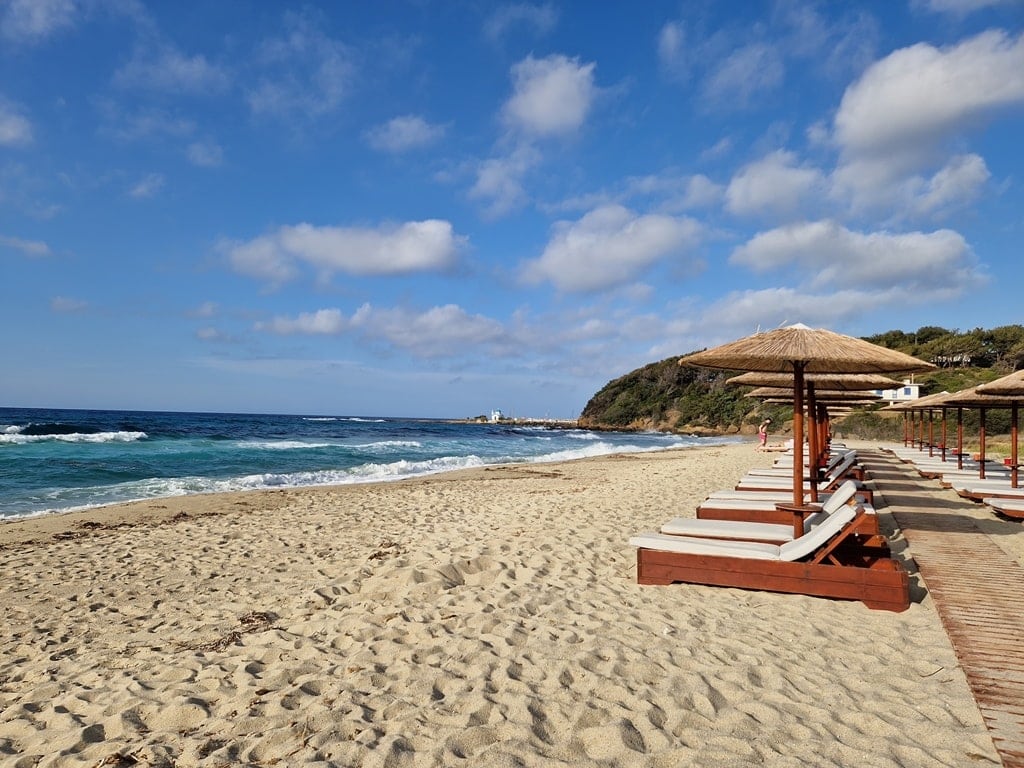
You might also like: The best beaches in Ikaria.
Sample the wine and beer
Afianes Wine History Museum and Winery: Near the village of Christos Rachon, you will find the Wine History Museum. It is located at the Afianes Winery and houses exhibits of various items related to the history of winemaking in Ikaria, from machinery to various tools, and even weaponry and garments.
After you have learned about the history of winemaking, drop by the winery to sample Ikaria’s excellent wines. During the summer, you can do that while enjoying various happenings and events with singing, dancing, and more!
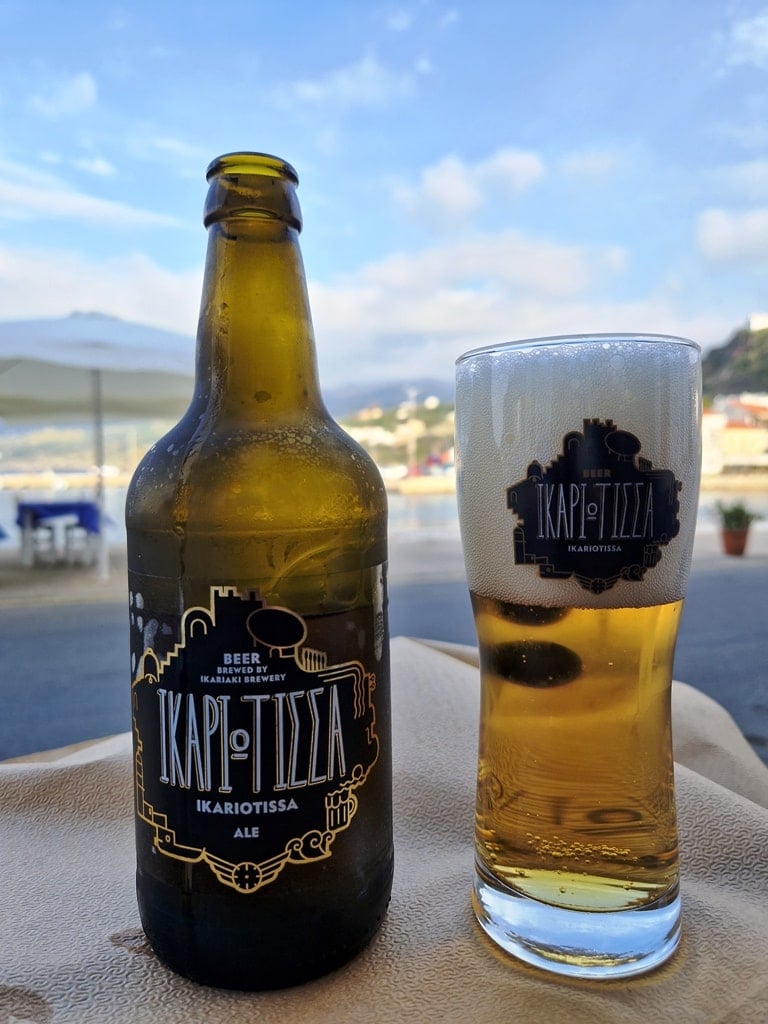
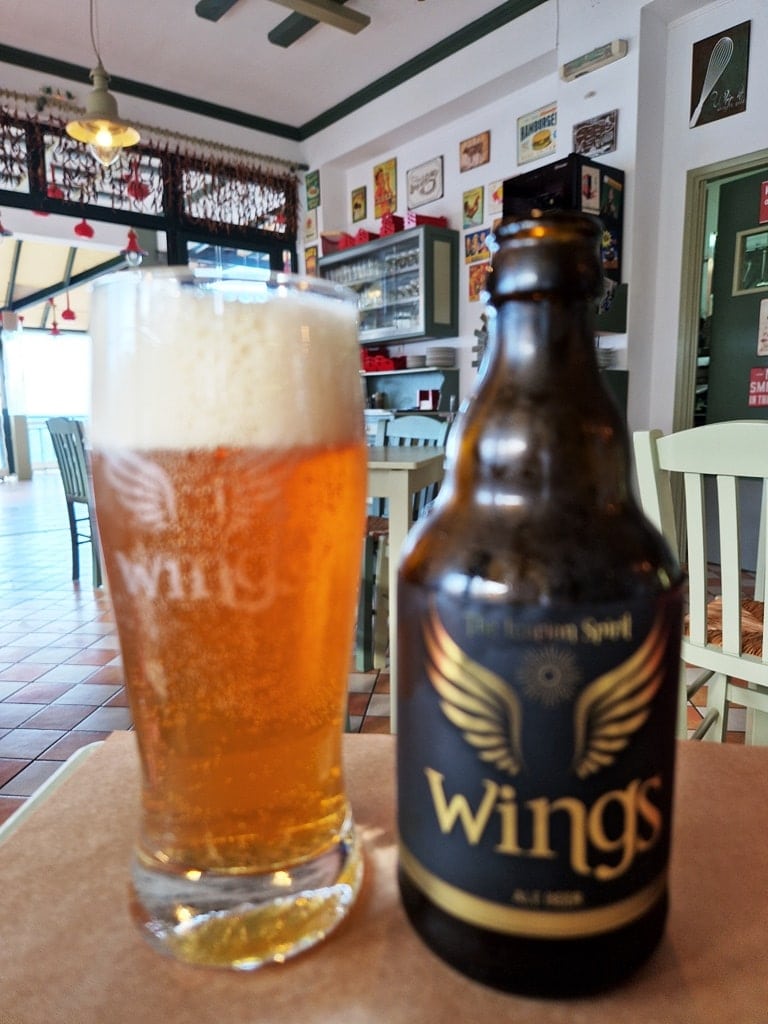
Ikarian beer: Ikaria is famous for its particular microbrewery beer, made from “longevity water, hop, and honey,” among other ingredients. The beer boasts of bringing the essence of Ikaria in a bottle. Make sure to sample its unique taste that has won international awards.
Join the Ikarian Panygiria
Ikaria is famous all over Greece for its “panygiria”. A “panygiri” is a feast day celebration in honor of a saint. Feast days are synonymous with name days. Panygiria also takes place on major religious holidays. But what are they?
They are a huge communal party where the entire village (often people from the surrounding villages too) converge in the churchyard or village square to dance, eat, sing, and make merry. Often in Ikaria, these panygiria will gather thousands of people at a time and everyone is welcome! Food and drink flow freely, and everyone feels ingroup when the music gets going.
No matter how they are described, you need to experience the Ikarian panygiria to know what they are and enjoy a unique event of tradition that transcends language or culture. Make sure you are rested, though as the panygiri will start at sundown and often end at sunrise!

